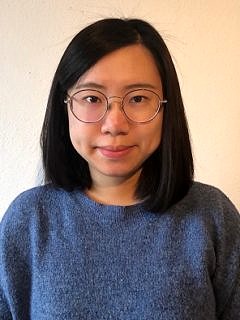Hsuan-Heng Lu
Hsuan-Heng Lu
Masterstudentin
Fabrication and characterization of electrospun fibers based on sol-gel bioactive glasses and hybrids
Betreuer: Dr. Liliana Liverani, Prof. Aldo R. Boccaccini
Electrospinning is a promising technique for producing fibers ranging from nano- to micrometers which exhibit favorable characteristics, such as high surface area to volume ratio and high porosity, for cell attachment and nutrient diffusion [1]. The morphology of electrospun fibers can be tailored to mimic human extracellular matrix (ECM) for various tissue engineering scaffold applications. Sol-gel method is a technique for producing bioactive glasses incorporating therapeutic metal ions and it can be used in combination with the electrospinning to obtain three-dimensional cotton-like bioactive glass fibers [2].
Following previous research in our Institute [3], the aim of this thesis work is the fabrication and characterization of bioactive glass fibers and hybrid fibers obtained by combining electrospinning and sol-gel method. Several compositions of bioactive glasses will be evaluated and several synthetic and natural-derived polymers and their complexes will be investigated for the hybrid fibers.
[1] Z. Huang et al., A review on polymer nanofibers by electrospinning and their applications in nanocomposites, Composites Science and Technology, 63 (2003) 2223–2253.
[2] E. Norris, C. Ramos-Rivera, G. Poologasundarampillai, J. P. Clark, Q. Ju, A. Obata, J. V. Hanna, T. Kasuga, C. A. Mitchell, G. Jell, J. R. Jones, Biomedical Materials (Bristol, England). 14 (2020) 15014.
[3] W. C. Lepry, et al., Acellular Bioactivity of Sol-Gel Derived Borate Glass-Polycaprolactone Electrospun Scaffolds, Biomed. Glasses 2 (2016) 88-98.

